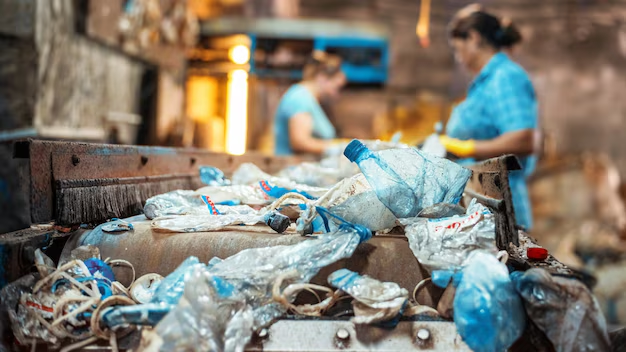If you’re like me, you’ve probably found yourself staring at piles of old notebooks after a busy school year, work project, or creative endeavour, wondering what to do with them. Can I recycle this paper? Should I just toss it? Is it really that important? These questions floated around in my mind, too, until I decided to dig deep and learn about the impact of notebook paper on our environment and how recycling can make a world of difference. This guide will provide you with everything you need to know about recycling notebook paper, why it matters, and how you can start making a sustainable impact today. Along the way, I’ll share personal experiences and expert insights that highlight just how much our everyday actions affect the planet.

In This Article
- My Notebook Dilemma: How It All Began
- Why Recycling Notebook Paper Matters: The Big Picture
- Step-by-Step Guide: How to Recycle Your Notebook Paper
- The Lifecycle of Recycled Paper: From Notebooks to New Products
- Environmental Impact: The High Cost of Paper Waste
- Recycling Success Stories: Communities Making a Difference
- Alternatives to Traditional Paper: The Future of Sustainable Notebooks
- Conclusion: Small Steps for a Greener Future
My Notebook Dilemma: How It All Began
A few years ago, while cleaning out my desk, I found a mountain of old notebooks from various stages of my life—university notes, personal journals, and even shopping lists. As I sifted through the pages, I thought, What do I do with all of this paper? Throwing it in the trash seemed wasteful, but at the time, I wasn’t sure if I could recycle notebooks with all those staples, metal coils, and the occasional plastic cover.
Not knowing what to do, I started researching and discovered a world of information about paper recycling—and more importantly, how our simple everyday choices, like tossing out a used notebook, can have much larger environmental consequences than we might think.
Why Recycling Notebook Paper Matters: The Big Picture
Recycling paper isn’t just about reducing waste—it’s about conserving resources, reducing energy consumption, and tackling climate change. When you recycle notebook paper, you’re helping to:
- Save Trees: It takes roughly 17 trees to produce one ton of paper, according to the National Environmental Engineering Research Institute (NEERI) in Nagpur. Imagine how many trees could be saved if we all recycled our used notebook paper.
- Reduce Energy Use: Recycling paper uses 30-50% less energy than making paper from new materials, depending on the type of paper.
- Cut Down on Water Pollution: Paper production is a major water guzzler, and recycling reduces the amount of water needed by around 50%.
- Lower Greenhouse Gas Emissions: Forests act as carbon sinks, absorbing CO₂. By recycling, we reduce the need to cut down trees, keeping more carbon locked in forests where it belongs.
Fun Fact: Did you know that recycling one ton of paper can save enough energy to power an average American home for six months, according to the Environmental Protection Agency (EPA)?
But how do you recycle a notebook? Let’s break it down.
Step-by-Step Guide: How to Recycle Your Notebook Paper
You might think, Can’t I just throw the whole notebook into the recycling bin? Well, it’s not quite that simple. Depending on your local recycling guidelines and the type of notebook, you might need to take a few extra steps.
1. Check the Notebook Binding
Most notebooks are bound with either metal or plastic coils. Some advanced recycling systems can handle these materials, but in many cases, you’ll need to remove them before recycling the paper.
- Metal Coils: If your recycling facility doesn’t accept notebooks with metal bindings, use pliers to unwind the coil and remove it. Most metal coils can be recycled separately from other metals.
- Plastic Coils: Plastic is trickier. Many recycling facilities won’t accept plastic spirals, so you’ll need to remove these and dispose of them in the trash or take them to a facility that recycles specific types of plastics.
Personal Tip: I’ve found it easy to keep a small set of tools handy for this purpose—a simple pair of pliers and some patience go a long way. Once you get into the rhythm of unwinding the coils, it becomes a satisfying pre-recycling ritual.
2. Remove Any Non-Paper Materials
Beyond the binding, some notebooks have plastic or vinyl covers, which must also be removed before recycling. While cardboard covers are usually recyclable, you should check whether your local facility accepts them mixed with paper.
- Plastic/Vinyl Covers: Remove and dispose of these with other plastics, or reuse them for art projects or storage dividers.
- Stickers, Tapes, or Dividers: If you have sticky notes, labels, or tabs, peel them off to prevent contamination of the recycling batch.
Personal Story: I once tried to recycle an old notebook with several plastic dividers still intact. When I took it to the recycling facility, they kindly informed me that those plastic pieces could contaminate the batch and lower the quality of the recycled paper. Since then, I’ve made sure to sort everything properly before recycling.
3. Recycle the Paper
Now that the non-paper materials have been removed, your notebook pages are ready for recycling. Tear out the used pages and place them in your paper recycling bin. If the pages are only lightly written or printed on one side, you can also reuse them for scrap paper before recycling.
Expert Insight: According to a report by the American Forest & Paper Association (AF&PA), paper can be recycled five to seven times before the fibres become too weak. So by recycling your old notebook paper, you’re giving it a new life multiple times!
4. What About Wet or Damaged Paper?
Unfortunately, wet or food-soiled paper (like paper towels or napkins) cannot be recycled because the fibres break down during the recycling process. If you find any damaged pages, consider composting them instead. Paper can be a great addition to your compost pile, as long as it’s not covered in heavy inks or adhesives.
Interactive Table: Quick Reference for Notebook Recycling
| Material | Recyclable? | Action |
| Paper Pages | Yes | Tear out and recycle or reuse as scrap |
| Metal Spiral Binding | Yes | Remove and recycle with metals |
| Plastic Spiral Binding | No | Remove and dispose of properly |
| Cardboard Cover | Yes (in most areas) | Recycle with paper, if allowed |
| Plastic Cover | No | Dispose of separately or find plastic recycling facility |
| Stickers/Labels | No | Remove and trash |
The Lifecycle of Recycled Paper: From Notebooks to New Products
Ever wonder what happens after you recycle your notebook paper? Here’s a glimpse into the paper recycling process:
- Collection: Your used notebook paper is collected and sent to a recycling facility.
- Sorting: The paper is sorted by type and quality. Office paper, newspaper, and cardboard all have different recycling processes.
- Shredding and Pulping: The paper is shredded and mixed with water to create a pulp.
- Cleaning: Inks, adhesives, and other contaminants are filtered out. This step may involve de-inking agents or chemical treatments.
- Pressing and Drying: The cleaned pulp is pressed into sheets and dried to form new paper. These sheets are then used to produce everything from toilet paper to new notebooks.
Real-World Example: Ranger Paper, an eco-friendly project based in Bangkok, Thailand, collects waste paper and transforms it into new notebooks. These notebooks are then distributed to disadvantaged schoolchildren across rural Thailand. It’s a fantastic example of how recycling paper not only helps the environment but also supports communities in need.
Environmental Impact: The High Cost of Paper Waste
You might be thinking, Does my little pile of notebooks really make a difference? The answer is yes—especially when you consider the broader environmental impact of paper waste.
1. Deforestation
As I mentioned earlier, it takes about 17 trees to produce one ton of paper. Now, multiply that by the millions of tons of paper produced each year. According to a report by the World Wildlife Fund (WWF), over 40% of the world’s industrial logging is used for paper production. By recycling, we reduce the demand for new paper, which helps protect forests.
2. Carbon Emissions
Forests act as carbon sinks, absorbing CO₂ and helping to mitigate climate change. When trees are cut down for paper production, not only do we lose this carbon-absorbing capacity, but the process of logging, transporting, and processing trees into paper emits CO₂. Recycling reduces the need for virgin paper, which in turn lowers emissions from logging and manufacturing.
3. Water Use
Producing a new paper is water-intensive. It takes about 17,000 gallons of water to produce one ton of paper. Recycling paper uses far less water, often reducing water consumption by 50%.
Personal Reflection: I vividly remember visiting a paper mill during a college field trip and being shocked at the amount of water required in the papermaking process. Watching thousands of gallons flow through the machinery, I realised how valuable a resource it was—and how recycling could help conserve it.
Recycling Success Stories: Communities Making a Difference
Let’s take a moment to recognise some incredible communities that have taken paper recycling to the next level:
San Francisco, California
San Francisco has one of the most advanced recycling systems in the U.S. In 2023, they collected and recycled over 50,000 tons of paper. Through their “Zero Waste by 2025” initiative, the city is on track to significantly reduce paper waste. This program makes it easy for residents to recycle not just paper but all sorts of materials, creating a model for other cities to follow.
Freiburg, Germany
Freiburg is known as Germany’s “Green City” for a reason. Residents recycle more than 80% of their paper waste thanks to a well-organised municipal system and strict regulations on paper production and use. Local businesses are also required to prioritise recycled paper products, creating a sustainable paper economy.
Kyoto, Japan
In Kyoto, public awareness campaigns have significantly boosted paper recycling rates. The city has placed recycling bins in schools, offices, and even public parks. Through educational initiatives, residents are taught from a young age about the importance of recycling, resulting in a community that views sustainability as a way of life.
Alternatives to Traditional Paper: The Future of Sustainable Notebooks
If you’re looking to go beyond recycling and make an even bigger impact, consider switching to sustainable alternatives to traditional notebooks. Here are a few innovative options:
1. Reusable Notebooks
Brands like Rocketbook offer smart, reusable notebooks that allow you to write, scan your notes to the cloud, and then erase the pages for reuse. It’s an eco-friendly solution for those who prefer digital backups but still love the tactile experience of writing by hand.
2. Bamboo Paper
Bamboo grows much faster than traditional trees, making it a sustainable alternative for paper production. Some companies are now producing notebooks made from bamboo fibres, which have a lower environmental impact.
3. Tree-Free Paper
Some innovative manufacturers are creating paper from agricultural waste, like sugarcane or hemp. These tree-free papers are biodegradable, compostable, and often require fewer chemicals in their production.
Expert Insight: In an interview with Dr Maria Gonzalez, a sustainability researcher, she shared, “The future of paper lies in alternative fibres and closed-loop recycling systems. Bamboo, hemp, and agricultural by-products offer promising alternatives to traditional paper, reducing our reliance on trees and minimising environmental degradation.”
Conclusion: Small Steps for a Greener Future
Recycling old notebook paper may seem like a small task, but when combined with the efforts of millions, it can have a significant environmental impact. By recycling paper, we save trees, conserve water, reduce carbon emissions, and keep our landfills from overflowing. And as more cities adopt comprehensive recycling programs, it’s becoming easier than ever to make sustainability a part of our daily lives.
So the next time you’re cleaning out your desk or finishing up a project, think twice before throwing that notebook in the trash. With a little effort, you can recycle those pages and contribute to a greener, more sustainable future.
Take Action: Start by setting up a paper recycling station at home or in your office, and share your newfound knowledge with friends and family. Together, we can make a lasting impact on the planet.







